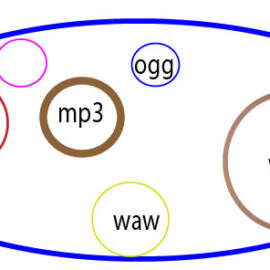How can you adjust the dish antenna yourself.
If you mount your satellite dish on a roof or balcony and connect the antenna cable from the LNB to your TV, you can proceed with the adjustment.
If you place your dish antenna in a dangerous location, never try to tune it yourself. Ask professionals to make the alignment.
To set up your satellite dish, first hold a smartphone with iOS or Android. Both systems have apps providing satellite information. If you don’t have a smartphone, use a computer to access sites like Dishpointer for satellite data.
Download Dish Align for IOS operating system from the link below.
For the Android operating system, you can download the sitellite director application from google play.
If you don’t know your dish’s offset angle, buy an inexpensive satellite signal finder. You can adjust without it, but it may be harder. The following explains how.

Things to do for satellite dish adjustment:
Communication satellites are located in the orbit called the Clarke belt (Geostationary orbit).

In order to reach these satellites, three different numerical values are required technically. Dish orientation is made according to the angle values below.
- Horizontal rotation angle (AZIMUTH)
- Vertical movement angle (ELEVATION)
- LNB rotation angle (LNB POLARISATION)
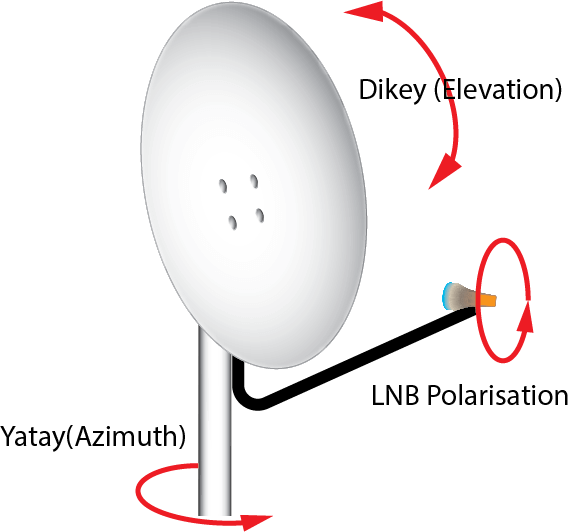
Setting the horizontal angle of rotation (AZIMUTH setting)
The easiest way to adjust the horizontal rotation angle is to take advantage of mobile phone applications. Below is shown how to set up for IOS.
Run the Dish align application. the program will automatically determine your location. If your phone’s location is off or the app lacks permission, enable location services and allow access
Ensure that GPS signals are fully received for at least 1 minute outdoors after running the program.
The program will generate angle values according to your region. Click the satellite dish icon in the upper left corner and select the satellite to adjust.
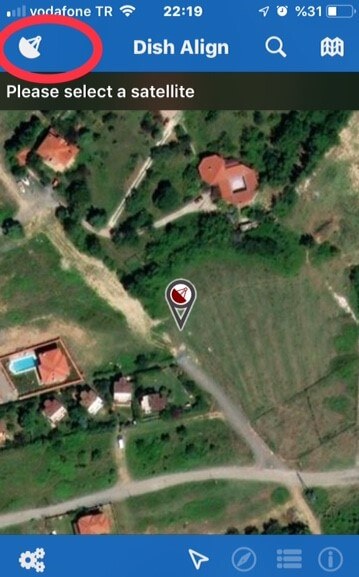
After selecting the satellite, click the compass icon in the bottom right. The screen that opens as below will show you which direction to turn your dish horizontally.
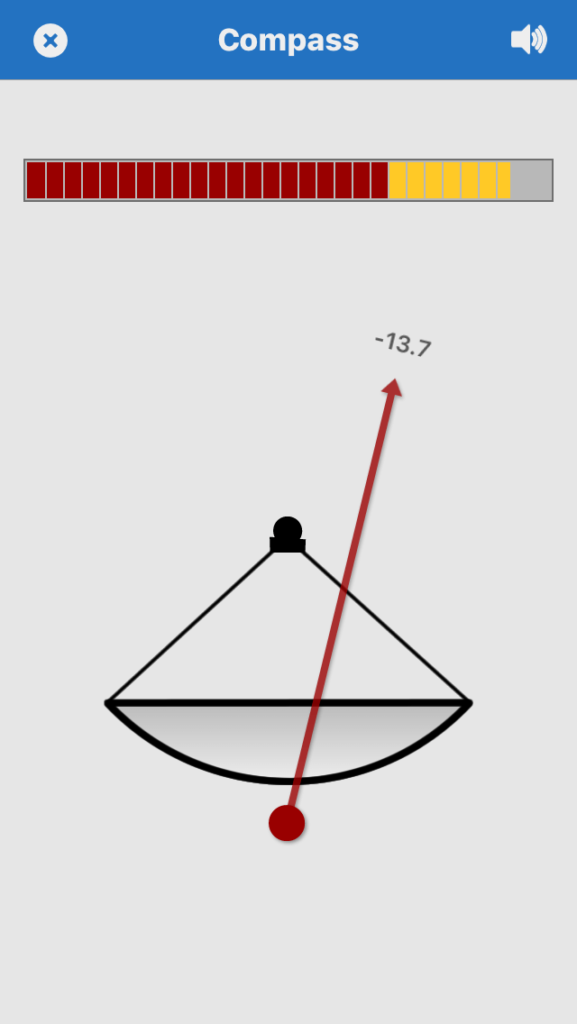
Mobile phones have a magnetometer for direction determination . This sensor is the data source for the digital compass. If your mobile phone is close to metal objects such as iron or magnetic fields, the magnetometer will be affected and produce false results.
As shown in the figure, change the direction of your phone without getting too close and fix your antenna by tightening your horizontal screw nuts.
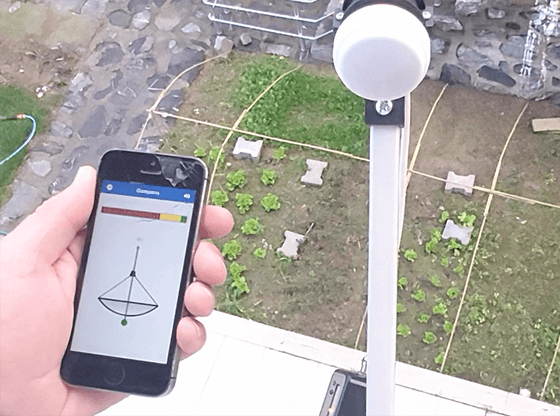
Adjusting the vertical direction of the satellite dish (ELEVATION)
There are two ways to adjust the satellite dish vertical motion angle:
- Adjusting according to satellite angle values
- Using satellite signal finder device
Adjusting according to satellite angle values:
Click on the info icon in the lower right corner to learn satellite information .
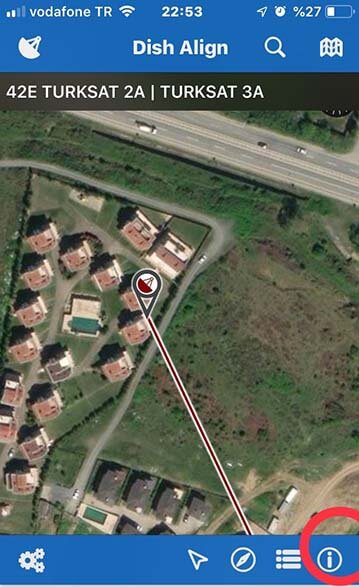
The system has calculated your satellite information based on your location. You can access this information by swiping the screen.
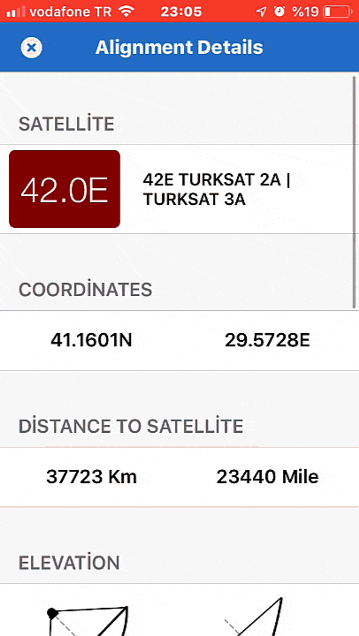
I see that the vertical angle of the dish should be 40.75 °. Yours will be different. So how will this dish angle be adjusted?
The calculation varies depending on the dish antenna you have. If your antenna is an aerial type — meaning your dish is fully round and the LNB sits at its focal point — adjust your dish vertically to a 40.75° angle.
Off-asix dish
If your dish is an off-axis (slightly oval) type with a shifted LNB, first determine its offset angle. This type is also called an offset antenna.
Dish offset angles vary by manufacturer and size, usually 18°–30°. Measure your dish or check the manufacturer’s website, or call them. Every 70 cm dish may differ, so avoid random online values. The safest method is to confirm with the company.
Ok, we learned that our dish offset angle value is 26 °. What will happen now? What is this offset angle value.
As shown in the figure below, the offset angle is the angle at which the dish surface reflects the satellite signal to the LNB.In other words, when you keep your satellite dish 90 ° perpendicular, you will actually have a 26 ° vertical angle of motion adjustment.
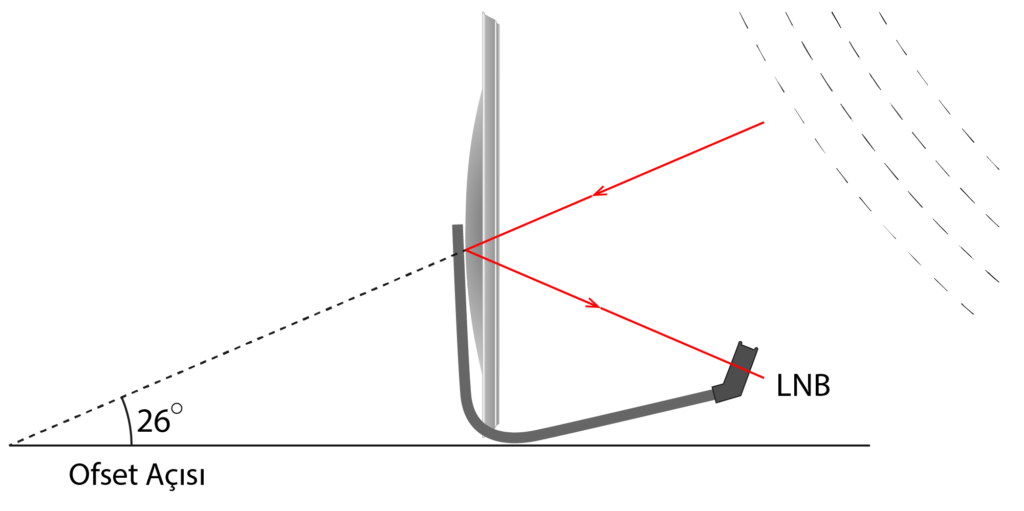
Now the offset angle value must be subtracted from 40.75 ° to find the vertical angle of movement of my satellite dish. Let’s calculate: 40.75 – 26 = 14.75 ° So I have to make upward 14.75 ° vertical movement. In this case, my dish position will be as shown below for Turksat.
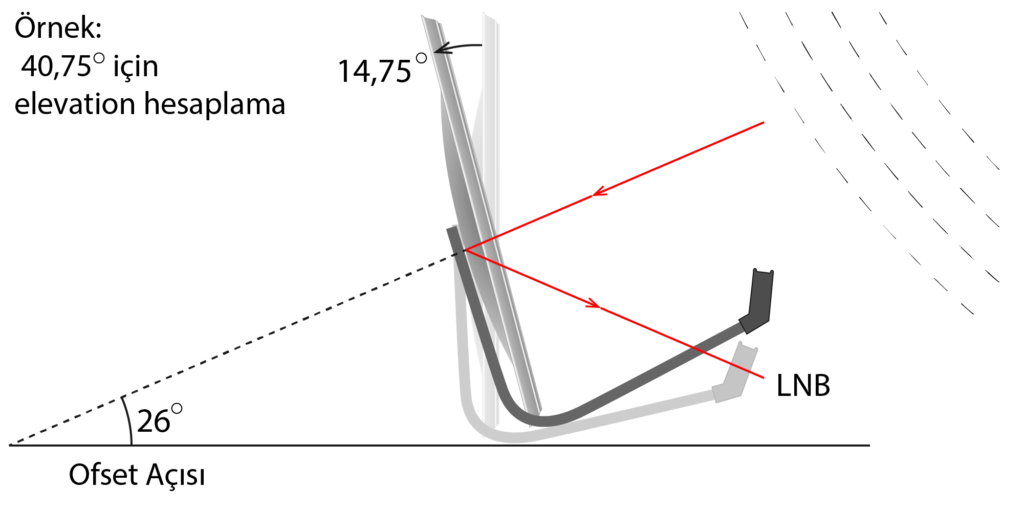
I can give the 14.75 ° angle (You will give the degree you find it) according to the angle value on the back of your bowl or with the help of a protractor. If calculating the angle is difficult, you can use a satellite signal finder as a solution.
If you cannot find the offset angle of your satellite dish, the best way to adjust the vertical is to use a satellite signal finder device. Afterwards, ensure the horizontal rotation angle is set within a 1% tolerance.
using device
The satellite signal finder mentioned above only informs you of the presence of the signal level. This is enough to make adjustments. Before using the device the most important thing to note is that you make sure to adjust the horizontal angle of rotation approximately.
The device you purchased is usually supplied with a short-length antenna cable. If not, you should make this cable not to exceed 30 cm yourself. To do this, 2 F-type connectors and some antenna cables work for you.
Connect the signal finder device between the LNB and the television, as shown in the figure below. Connect the short antenna cable to the LNB. LNB and Receiver should be connected to which side of the signal finder device.
If you previously used DiSEqC in your antenna installation, your device may have trouble detecting the signal. If you use it without DiSEqC, you will have a safer setting. (DiSEqC is a circuit element used to join antenna cables from multiple and different directions dish antenna. Digital Satellite Equipment Control stands for.)
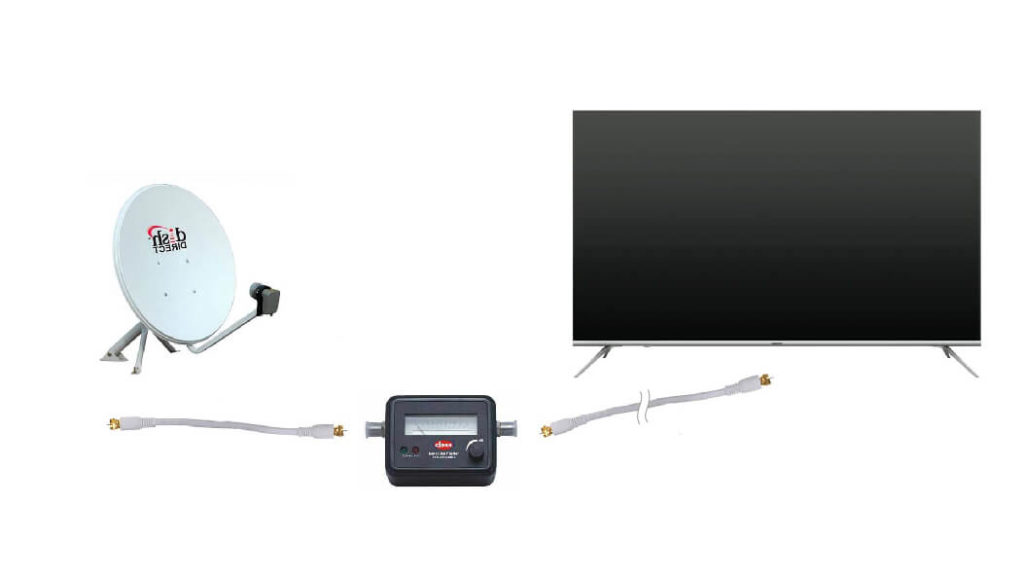
Turn on the TV after making the connections. the signal finder device will receive the energy required for its operation from the television.
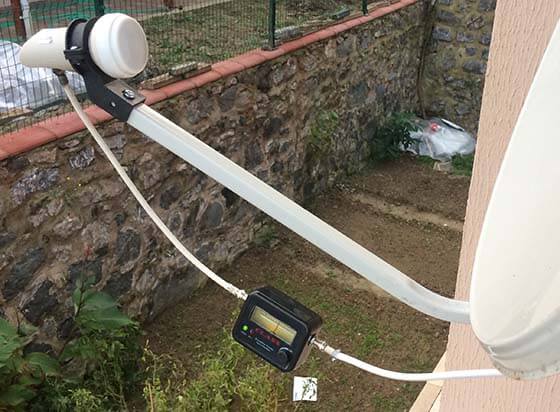
Adjust the button on the satfinder so that the needle of your satellite signal finder device is in the middle. Turn down the pot so that you hear a low, flat, high-pitched sound. If you do not hear sound or have maximum volume, you cannot make the correct setting.
Move your dish upward in 1° increments. If the signal strengthens, adjust the device dial to the middle or slightly below. Fine-tune up and down to maximize signal efficiency. If the horizontal angle isn’t fully adjusted, slightly move the dish left or right to improve signal strength.
Hold your hand between the LNB and the dish to test whether the sound you hear from the signal finder device is due to the signal from the satellite. If the sound is cut off, the sound you hear is the sound produced due to the signal coming from the satellite.
How to make LNB skew angle adjustment (LNB Polarization)
The cheap satellite signal finder device you have does not detect the LNB skew angle change. The LNB skew angle varies according to the satellite you select in the clarke belt, such as the AZIMUTH and ELEVATION values, and the geographic region in which you are located. Therefore, learn the LNB skew angle value from your mobile device application.
While the LNB connection socket on the dish antenna is a downside, the LNB skew angle is 0 ° (relative) when you look at your dish antenna from the front. Clockwise rotation increases as negative (-) values! counterclockwise increases with positive (+) values.
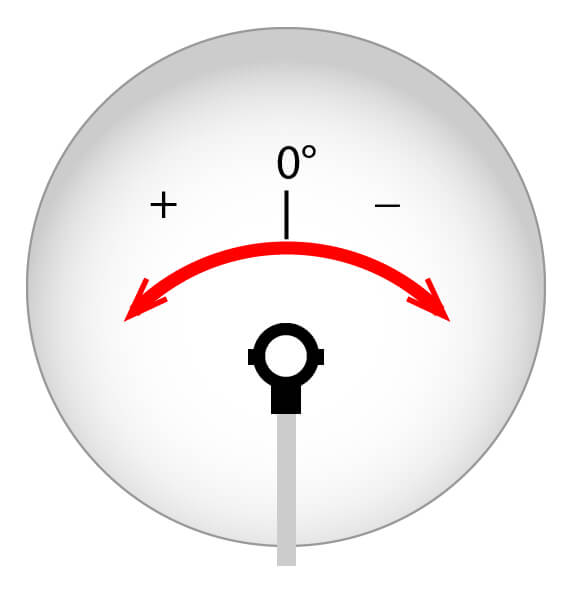
Since the value given by the mobile phone application for Turksat is -13 °, I have to adjust the angle by rotating the LNB 13 ° clockwise. Angle values are marked on the LNB. This also makes it easier for you to adjust the angle. LNB skew angle adjustment is independent of vertical and horizontal adjustment. Therefore, you can adjust the LNB setting before other settings.
As a result:
If you have not been able to adjust, do not give up. Do not be desperate and do not ask for help from a satellite antenna technician immediately by saying “Where did we get into this?”. The service comes, turns your dish 1 ° to the left, 2 ° down and takes your money. Then you will be upset. ? Be patient. Try again




